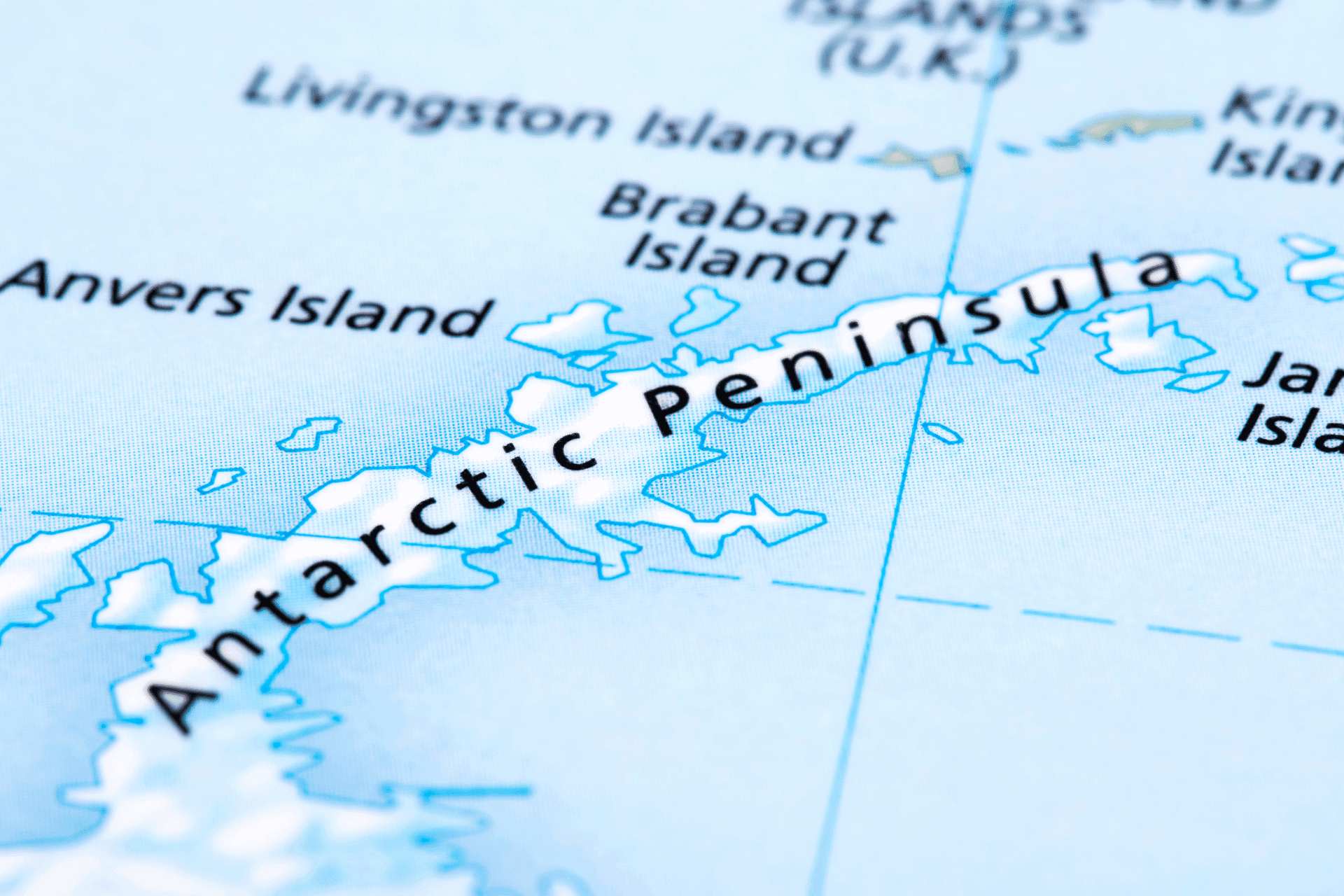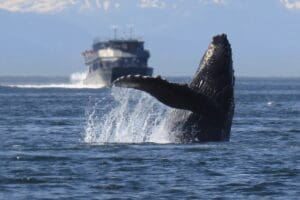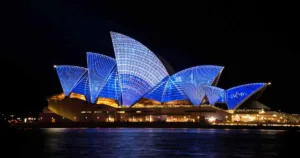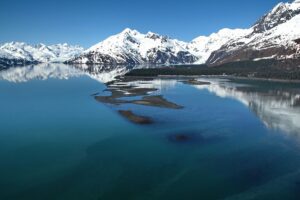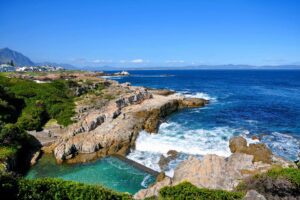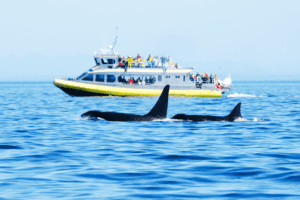Antarctic Peninsula Whale Watching: A Guide to Prime Spots and Seasons
Embarking on a whale watching journey to the Antarctic Peninsula offers you an extraordinary chance to witness the spectacular dance of marine giants in one of the planet’s most remote and pristine environments. Enveloped by the cold, nutrient-rich waters of the Southern Ocean, the Antarctic Peninsula serves as a prime feeding ground for several whale species, including the awe-inspiring humpback and the elusive minke whales. As you navigate through the Drake Passage, the anticipation builds until you reach the peninsula, where you’re not only welcomed by icebergs and glaciers but also by the chance to watch these majestic creatures in their natural habitat.
During your Antarctic expedition, the experiences you’ll have are as vast as the ocean itself. From the deck of your ship or the seat of a Zodiac, you’ll have the opportunity to observe the whales as they breach, feed, and socialize. These intimate encounters with Earth’s largest mammals in such a stark and beautiful landscape are profound and truly unmatched. The Antarctic Peninsula offers not just a glimpse into the lives of these oceanic behemoths but also a deeper understanding of the fragile and interconnected web of life that thrives even in the coldest corners of our world.
History of Whale Watching in the Antarctic Peninsula
Antarctic Peninsula has become a premier destination for you to experience whale watching, transitioning from a history marred by intensive whaling to a significant spot for ecotourism with a focus on conservation and education.
The Emergence of Ecotourism
You’ll find that the ecotourism in the Antarctic Peninsula began gaining traction as global awareness on the importance of preserving marine life surged. Amidst the ice-capped landscapes and pristine waters, you can encounter species like the Humpback Whale and Minke Whales, which are often the highlight of these eco-friendly tours. The region boasts whale-watching opportunities mainly during the Austral summer, from late October to March, when these magnificent creatures frequent the Antarctic waters to feed on the abundant krill.
Impact of Historical Whaling
Historical whaling left an indelible mark on the Antarctic Peninsula. This activity peaked in the early 20th century when whales were hunted for their valuable blubber and meat. The exploitation led to a significant decline in whale populations. However, with the advent of the whaling ban and the establishment of sanctuaries, there has been a concerted effort to protect these marine giants. Today, whale watching serves not only as an economic benefit but as a tool to promote conservation and educate visitors about the impacts of human activities on whale populations.
Planning Your Visit
Embarking on a whale-watching journey to the Antarctic Peninsula involves careful timing, select departure points, and choosing the right cruise to optimize your experience.
Best Time for Whale Watching
The optimal period for whale watching in the Antarctic Peninsula is during the austral summer, particularly from February to March. During these months, whale activity is at its peak, and you have the highest chances of encountering humpback and minke whales.
Getting There: Ushuaia and the Drake Passage
Your adventure will likely begin in Ushuaia, the southernmost city of Argentina, which is the main gateway for Antarctic cruises. From there, you’ll traverse the infamous Drake Passage. Choosing a classic Antarctic cruise, you should prepare yourself for potentially rough seas. Alternatively, the “Fly the Drake” option allows you to bypass the passage by air, landing you directly on the continent.
Choosing an Antarctic Cruise
Selecting an Antarctic cruise entails matching your expectations with the offerings:
- Classic Antarctica: offers comprehensive itineraries that include the South Shetland Islands and the western side of the Antarctic Peninsula.
- Zodiac Excursions: Smaller, more intimate experiences like guided zodiac tours can bring you up close to the whale action.
- Vessel Size: Smaller ships offer flexibility and may provide closer encounters, while larger vessels boast more facilities.
Prepare for cool conditions on the Southern Ocean and pack accordingly, ensuring you have appropriate gear for both the cruise and any onshore excursions.
Whale Species of the Antarctic Peninsula
The Antarctic Peninsula is a thriving marine habitat hosting several species of whales. Your adventure in these icy waters provides a rare opportunity to observe some of the most magnificent creatures on Earth in their natural environment.
Humpback Whales: Gentle Giants
The Humpback Whale, recognized by its distinctive body shape and long pectoral fins, is a frequent visitor to the Antarctic Peninsula. During the feeding season, you can witness these gentle giants gracefully maneuver through the water, often breaking the surface in a display known as breaching.
Minke Whales: The Sleek Swimmers
Minke Whales are smaller and more elusive but equally fascinating. They are known as the sleek swimmers due to their slender shape and swift movements. Your keen eye might catch them darting through the waves or coming up for air with their distinctively pointed heads.
Killer Whales: Apex Predators
The Orca, or Killer Whale, is a powerful predator and one of the most intelligent marine mammals. These apex predators are easily identifiable by their black and white coloring and their presence speaks to the rich biodiversity supported by the Antarctic Peninsula.
Blue Whales and Other Species
Occasionally, the majestic Blue Whale—the largest animal to have ever existed—can also be seen. Alongside them, the Antarctic waters are home to other species like the agile Fin Whale and the deep-diving Sperm Whale, although they are sighted less frequently. Your visit could be rewarded with a glimpse of these remarkable whale species, each with their own unique behaviors and characteristics.
Wildlife Encounters and Biodiversity
As you embark on a journey to the Antarctic Peninsula, you’re not merely visiting a place; you’re immersing yourself in one of the planet’s most diverse ecosystems. Prepare to be amazed by the ballet of penguins on ice, the curiosity of seals in their natural habitat, and the aerial displays of seabirds.
Penguins: From Icebergs to Beaches
Penguins are synonymous with Antarctic wildlife. You’ll encounter numerous species, including the Adélie, Chinstrap, and Gentoo penguins. As they shuffle awkwardly on the ice, penguins are fascinating to watch. On the beaches or atop icebergs, their colonies are a hive of activity that you can observe from a respectable distance to ensure their natural behavior remains undisturbed.
Seals: Exploring Their Habitat
Seals in Antarctica are a remarkable sight, ranging from the formidable Leopard Seal to the sociable Crabeater Seals. The solitary Leopard Seal is an apex predator often found skimming the edges of ice flows. Its less menacing relative, the Crabeater Seal, is more plentiful and usually spotted lounging on floating ice. Keep an eye out for the massive Elephant Seals, whose size and deep calls are a wonder to behold.
Seabirds and Other Fauna
The Antarctic skies are filled with a variety of seabirds. From the regal albatross, with its expansive wingspan, to the petite terns darting around the sky, birds add another layer to the peninsula’s biodiversity. Wildlife viewing opportunities also include a chance to see petrels and skuas engaged in their own daily struggles for survival. Every creature, from the smallest seabird to the largest whale, plays a role in the rich tapestry of Antarctic life.
Adventure Options Beyond Whale Watching
While whale watching is a central attraction in Antarctica, your adventure doesn’t solely revolve around these majestic marine mammals. You have an array of invigorating activities that promise close encounters with the unique ecosystem of the White Continent.
Kayaking Amongst the Ice
Kayaking in Antarctica is an intimate experience that allows you to navigate through serene waters, getting up close to icebergs and wildlife. As you paddle, you may find yourself accompanied by curious seals or penguins. One Ocean Expeditions offers excursions where you can immerse yourself in the surreal landscape.
Diving into the Cold Waters
Experience the thrill of diving in one of the coldest environments on Earth. Plunge beneath the surface and discover the colorful underwater world teeming with marine life. Equipped with proper dry suits and guidance, your submersion into the Antarctic ocean becomes an unforgettable endeavor.
Camping on the White Continent
Camping gives you the rare opportunity to spend a night on the actual ice-covered land. Adventure Life orchestrates these outings where you can make camp amid the quiet wilderness. As night falls, the sounds of nature create a profound sense of connection to this remote terrain.
Throughout these activities, remember that safety and environmental respect are paramount. Adhering to guidelines ensures your adventure also preserves the pristine nature of the continent.
Conservation Efforts
The pristine waters of the Antarctic Peninsula are a haven for whales, and concerted efforts in conservation have been pivotal in protecting these majestic creatures and their habitat. Your understanding of these initiatives is essential for appreciating the complex interplay between nature and human activity in this delicate ecosystem.
Protected Areas and Regulations
Protected Marine Areas: Specific regions of the Antarctic Peninsula have been designated as Marine Protected Areas (MPAs) to safeguard critical whale habitats from the impacts of fishing and other marine activities. These areas ensure the preservation of the Antarctic Convergence, a rich feeding ground where cold northward-flowing Antarctic waters meet the warmer waters of the subantarctic.
- International Whaling Commission (IWC): The IWC has established regulations that ban commercial whaling in these waters, turning former whaling stations into research posts to monitor whale populations and health.
Sustainable Tourism Practices
Whale Watching Guidelines: Tour operators in the Antarctic Peninsula follow strict whale watching guidelines that minimize the impact on whales and their natural behaviors. You’ll find that about 13% of cruise activities in the region are dedicated to responsible whale watching, ensuring your interactions with these creatures are both memorable and non-intrusive.
- Collaborative Research: Some tourism vessels double as research platforms, providing scientists with the opportunity to study whales and krill populations up close. These collaborative efforts between tourism and science communities contribute to ongoing conservation and help to maintain the balance of the Antarctic ecosystem.
Cultural and Historical Explore
While you’re on your journey to observe the majestic whales of the Antarctic Peninsula, you have the unique opportunity to steep yourself in the region’s rich cultural and historical tapestry. From the haunting remnants of past expeditions to contemporary centers of scientific discovery, every visit resonates with the echoes of human endeavor against the grandeur of this frozen wilderness.
Historic Sites and Shackleton’s Legacy
As you navigate the icy waters, the historic sites scattered across the South Georgia will capture your imagination. The most evocative of these is perhaps Grytviken Whaling Station. Once a bustling hub of the Southern Ocean’s whaling industry, Grytviken now stands as a silent testament to a bygone era. Here, you’ll find the final resting place of the legendary explorer Sir Ernest Shackleton, whose ill-fated Endurance expedition remains one of the most dramatic tales of survival. Visiting Shackleton’s grave, you can pay your respects and reflect on the indomitable spirit of exploration that defines the region.
Visiting Research Stations
In contrast to the historical solitude of Grytviken, the scientific bases such as King Edward Point offer a glimpse into the Antarctic’s current role on the global stage. These stations are pivotal for research on a variety of topics, including the crucial krill populations that form the backbone of the Antarctic food web. If your itinerary includes a stop at these research outposts, you’ll gain firsthand insights into the efforts to understand and protect this delicate marine ecosystem. The stations are also valuable touchpoints for understanding how contemporary efforts to preserve the peninsula’s history and natural beauty continue to evolve.
Photography and Documenting Your Journey
Embarking on a whale-watching journey to the Antarctic Peninsula offers you an extraordinary opportunity to document one of the world’s most pristine environments and its inhabitants. Whether you’re an amateur photographer or a seasoned professional, capturing the essence of this surreal landscape and its wildlife—ranging from imposing whales to sociable penguins—should be a top priority.
Photography Workshops and Seminars
When you book your trip, look for itineraries that include Photography Workshops and Seminars. These can equip you with the skills to take stunning photographs in challenging lighting and weather conditions characteristic of the Antarctic. Experts will guide you in mastering camera settings ideal for capturing fast-moving subjects, such as whales or seals, and provide tips for landscape photography that truly encapsulate the vastness and beauty of the area.
Capturing the Majestic Wildlife
Wildlife Viewing is a centerpiece of Antarctic expeditions, and your lens will be tantalized by the variety of species accessible to you. Here are a few points on capturing each:
- Penguins: These curious animals make for charming subjects. To photograph them, use a zoom lens to capture intimate details without disrupting their natural behavior.
- Seals: Often found lounging on ice floes, be patient to get a shot of seals in their most relaxed state or interacting with their environment.
- Whales: The pinnacle of wildlife photography here, whales require a fast shutter speed to freeze the action, especially during breaching. Aim for overcast days to avoid harsh shadows and highlight the whales’ textures.
Remember to adjust your camera’s exposure to the Antarctic’s reflective snowscape, and always stay ready for that spontaneous wildlife moment. Your expedition to the Antarctic Peninsula is more than a trip; it’s a chance to etch memories of Earth’s remote wonders into images that will captivate and inspire.
Frequently Asked Questions
Embarking on a whale-watching expedition in the Antarctic Peninsula is an exhilarating experience. This section provides answers to some of the most common inquiries to help you plan your adventure.
What is the peak season for whale watching in the Antarctic Peninsula?
The best time for whale watching in the Antarctic Peninsula is typical during the Austral summer, from December to March when whales are more active and visible.
Which species of whales are commonly sighted during Antarctic Peninsula tours?
During tours, you can often see Humpback whales, Minke whales, and even Orcas, which are a type of large dolphin commonly included in whale-watching guides.
How can tourists improve their chances of seeing whales on an Antarctic Peninsula cruise?
To enhance your likelihood of whale sightings, choose a cruise that offers zodiac excursions and spends ample time in areas known for whale activity.
What are some notable whale behaviors visitors could observe in Antarctica?
Visitors might be fortunate enough to witness Humpback whales breaching, krill-feeding, or tail-slapping, providing a truly memorable spectacle.
Are there specific areas within the Antarctic Peninsula that are known hotspots for whale sightings?
Yes, places like Wilhelmina Bay are renowned for their high concentrations of feeding whales, making them prime spots for whale watching.
What type of tour should one look for when planning a whale-watching trip to the Antarctic Peninsula?
When planning your trip, look for a dedicated whale-watching tour or a broader Antarctic cruise that includes multiple opportunities to observe these majestic creatures.

